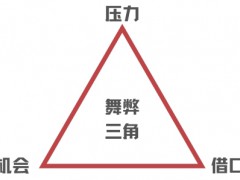據(jù)美國(guó)鉆井網(wǎng)站報(bào)道,監(jiān)測(cè)專(zhuān)家Senstar日前已經(jīng)確定了影響2023年石油和天然氣行業(yè)的三大安全趨勢(shì): 持續(xù)不斷的沖突和物理安全威脅,新的人工智能增強(qiáng)技術(shù),以及對(duì)網(wǎng)絡(luò)安全威脅保持警惕。
Senstar產(chǎn)品經(jīng)理斯圖爾特·杜瓦告訴美國(guó)鉆井網(wǎng)站記者:“地緣政治沖突、地區(qū)不穩(wěn)定、潛在的地緣政治或生態(tài)恐怖主義,繼續(xù)對(duì)油氣基礎(chǔ)設(shè)施及其人員的物理安全構(gòu)成重大威脅。”
杜瓦說(shuō),“2023年及以后的一個(gè)具體重點(diǎn)領(lǐng)域是液化天然氣基礎(chǔ)設(shè)施的物理安全,包括工廠、出口終端和再氣化設(shè)施。液化天然氣基礎(chǔ)設(shè)施的戰(zhàn)略意義再怎么強(qiáng)調(diào)也不過(guò)分——在許多司法管轄區(qū),物理安全系統(tǒng)必須在運(yùn)營(yíng)開(kāi)始之前得到全面認(rèn)證,這使得液化天然氣設(shè)施成為具有大量安全要求的高價(jià)值目標(biāo)。”
杜瓦指出,為了降低這些風(fēng)險(xiǎn),油氣公司正在投入大量資源來(lái)提高他們?cè)诎l(fā)生物理安全威脅時(shí)檢測(cè)的能力,通過(guò)改進(jìn)的遠(yuǎn)程監(jiān)控來(lái)保持態(tài)勢(shì)感知,并縮短安全衛(wèi)隊(duì)的反應(yīng)時(shí)間。
杜瓦說(shuō),“對(duì)于埋地管道來(lái)說(shuō),這意味著部署遠(yuǎn)程光纖傳感器,可以將干擾定位和分類(lèi)到幾英尺或幾米內(nèi),并將這些信息傳遞到中央監(jiān)測(cè)中心。”
他補(bǔ)充說(shuō):“對(duì)于石油和天然氣設(shè)施,新一代周界入侵傳感器、低成本熱成像攝像機(jī)和人工智能視頻分析為安全人員提供了更好的態(tài)勢(shì)感知能力,使他們能夠在形勢(shì)發(fā)展時(shí)采取快速有效的行動(dòng)。”
人工智能技術(shù),網(wǎng)絡(luò)安全
杜瓦還強(qiáng)調(diào)說(shuō),涉及新人工智能技術(shù)的媒體報(bào)道在2022年受到了“大量關(guān)注”,并表示這一趨勢(shì)將在2023年繼續(xù)下去。
他說(shuō):“對(duì)于石油和天然氣行業(yè)來(lái)說(shuō),人工智能驅(qū)動(dòng)的深度學(xué)習(xí)有可能徹底改變基于數(shù)據(jù)的決策的各個(gè)方面,從地質(zhì)調(diào)查到市場(chǎng)預(yù)測(cè)到入侵目標(biāo)檢測(cè)。”
“從本質(zhì)上講,人工智能是將經(jīng)驗(yàn)智能添加到基于大型數(shù)據(jù)集訓(xùn)練做出的決策中。對(duì)于物理安全應(yīng)用,人工智能增強(qiáng)的智能將導(dǎo)致安全和視頻監(jiān)控系統(tǒng)更好地決定什么是威脅,什么不是威脅,避免出現(xiàn)與假積極結(jié)果相關(guān)的干擾。”
杜瓦繼續(xù)說(shuō)道:“人工智能應(yīng)用程序?qū)⒗^續(xù)在石油和天然氣行業(yè)取得進(jìn)展,特別是由于應(yīng)用程序的成熟以及更容易部署。”
杜瓦告訴美國(guó)鉆井網(wǎng)站記者,雖然油氣基礎(chǔ)設(shè)施的物理安全是最受關(guān)注的問(wèn)題,但網(wǎng)絡(luò)安全也是最受關(guān)注的問(wèn)題。
他說(shuō):“事實(shí)上,由于獨(dú)立系統(tǒng)日益整合,以增強(qiáng)能力和簡(jiǎn)化操作,實(shí)體和網(wǎng)絡(luò)領(lǐng)域之間的分離正在迅速消失。”
他補(bǔ)充說(shuō):“惡意行為者,特別是在國(guó)家支持的層面上,可以利用網(wǎng)絡(luò)安全漏洞來(lái)破壞運(yùn)營(yíng),竊取知識(shí)產(chǎn)權(quán),并將組織作為贖金要求的人質(zhì)。”
“在組織層面,我們可以預(yù)期將繼續(xù)關(guān)注全面的網(wǎng)絡(luò)安全審計(jì)和最佳實(shí)踐的實(shí)施,而在產(chǎn)品層面,我們將更加關(guān)注減少攻擊媒介、解決漏洞和實(shí)施網(wǎng)絡(luò)入侵檢測(cè)軟件。”杜瓦繼續(xù)說(shuō)道。
沿中東地緣政治斷層線的摩擦與日俱增
當(dāng)美國(guó)鉆井網(wǎng)站向全球風(fēng)險(xiǎn)情報(bào)公司Verisk Maplecroft詢問(wèn)今年油氣市場(chǎng)的安全趨勢(shì)時(shí),該公司發(fā)言人提交了一份報(bào)告,報(bào)告指出,沿中東所有主要的地緣政治斷層線,摩擦正在增加。
Verisk Maplecroft分析師在報(bào)告中指出:“沿中東幾條地緣政治斷層線不斷升級(jí)的緊張局勢(shì),有可能破壞中東的石油供應(yīng)。”
分析人士在報(bào)告中表示:“在所有這些地緣政治斷層線上的摩擦不斷增加的情況下,風(fēng)險(xiǎn)不僅僅是針對(duì)能源基礎(chǔ)設(shè)施和航運(yùn)的襲擊更加頻繁。”
“更廣泛的地區(qū)對(duì)抗對(duì)全球石油市場(chǎng)產(chǎn)生廣泛影響的風(fēng)險(xiǎn)也高得令人不安。”分析師們補(bǔ)充道。
根據(jù)英國(guó)石油公司對(duì)世界能源的最新統(tǒng)計(jì)回顧,沙特阿拉伯2021年的石油日產(chǎn)量為1095萬(wàn)桶,居全球第二。英國(guó)石油公司的統(tǒng)計(jì)審查顯示,2021年全球最大的石油生產(chǎn)國(guó)是美國(guó),每天石油產(chǎn)量為1658萬(wàn)桶。
李峻 編譯自 美國(guó)鉆井網(wǎng)站
原文如下:
Oil and Gas Security Trends in 2023
Surveillance specialist Senstar has identified three security trends affecting the oil and gas sector in 2023;ongoing conflicts and physical threats, new artificial intelligence-enhanced technologies, and remaining vigilant against cybersecurity threats.
“The conflict , regional instabilities, and the potential for geopolitical or ecological-based terrorism continues to pose substantial threats to the physical security of oil and gas infrastructure and its personnel,” Senstar Product Manager Stewart Dewar told Rigzone.
“One specific area of focus in 2023 and beyond is the physical security of LNG infrastructure, including plants, export terminals, and regasification facilities. The strategic significance of LNG infrastructure cannot be overstated - in many jurisdictions, physical security systems must be fully certificated before operations can even start, making LNG facilities high-value targets with substantial security requirements,” he continued.
To mitigate these risks, oil and gas companies are devoting substantial resources to improving their ability to detect physical security threats as they occur, maintain situational awareness via improved remote monitoring, and reduce reaction times of security forces, Dewar noted.
“For buried pipelines, this means the deployment of long-range fiber optic sensors that can locate and classify disturbances to within a few feet or meters and relay this information to central monitoring centers,” he said.
“For oil and gas facilities, a new generation of perimeter intrusion sensors, low-cost thermal cameras, and AI-powered video analytics provide security personnel with improved situational awareness, empowering them to take quick and effective action as situations develop,” he added.
AI Tech, Cybersecurity
Dewar also highlighted that media stories involving new AI technologies received “substantial attention” in 2022 and said this trend will continue this year.
“For the oil and gas industry, AI-powered deep learning has the potential to revolutionize all aspects of decision making based on data, from geological surveys to market forecasts to intruder detection,” he said.
“At its heart, AI is about adding experiential intelligence to decisions being made based on training from large datasets. For physical security applications, AI-enhanced intelligence will result in security and video surveillance systems making better decisions about what is and is not a threat, avoiding the distractions associated with false positive results,” he added.
“Given their potentially game-changing benefits, AI-enabled applications will continue to make in-roads in the oil and gas industry, especially as applications mature and become easier to deploy,” Dewar continued.
While the physical security of oil and gas infrastructure is a top concern, so too is cybersecurity, Dewar told Rigzone.
“In fact, as separate systems become increasingly integrated, to enhance capabilities and streamline operations, the separation between physical and cyber realms is quickly dissolving,” he said.
“Malicious actors, particularly on the state-sponsored level, can exploit cybersecurity weaknesses to disrupt operations, steal intellectual property, and hold organizations hostage to ransom demands,” he added.
“At an organizational level, we can expect a continued focus on comprehensive cybersecurity audits and the implementation of best practices, while on a product level, an increased focus on reducing attack vectors, addressing vulnerabilities, and implementing network intrusion detection software will be prioritized,” Dewar went on to state.
Friction Increasing Along Middle East Geopolitical Fault Lines
When Rigzone asked global risk intelligence company Verisk Maplecroft what security trends it expected to see in the oil and gas market this year, a company spokesperson sent through a report which noted that friction was increasing along all of the Middle East’s main geopolitical fault lines.
“Rising tensions along several fault lines are threatening to disrupt the supply of oil from the Middle East,” Verisk Maplecroft analysts stated in the report.
“Amid increasing friction along all these fault lines, the risk is not just more frequent attacks against energy infrastructure and shipping,” the analysts said in the report.
“The risk of a broader regional confrontation with wide-reaching consequences for the global oil market is also uncomfortably high,” the analysts added.
According to BP’s latest statistical review of world energy, Saudi Arabia ranked second in global oil production in 2021 with an output of 10.95 million barrels of oil per day. The top oil producer in 2021 was the U.S. with 16.58 million barrels per day, BP’s statistical review showed.
免責(zé)聲明:本網(wǎng)轉(zhuǎn)載自其它媒體的文章及圖片,目的在于弘揚(yáng)石化精神,傳遞更多石化信息,宣傳國(guó)家石化產(chǎn)業(yè)政策,展示國(guó)家石化產(chǎn)業(yè)形象,參與國(guó)際石化產(chǎn)業(yè)輿論競(jìng)爭(zhēng),提高國(guó)際石化產(chǎn)業(yè)話語(yǔ)權(quán),并不代表本網(wǎng)贊同其觀點(diǎn)和對(duì)其真實(shí)性負(fù)責(zé),在此我們謹(jǐn)向原作者和原媒體致以崇高敬意。如果您認(rèn)為本站文章及圖片侵犯了您的版權(quán),請(qǐng)與我們聯(lián)系,我們將第一時(shí)間刪除。







